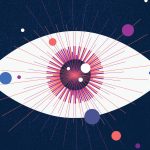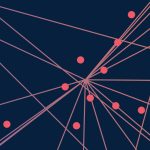Dan Tierney Biology Meets Technology
Dan Tierney is no stranger to big data. When Tierney founded a financial technology firm in the late 1990s, long before he joined the Salk Institute’s Board of Trustees, he was fascinated by emerging computational approaches that could crunch data and reveal hidden truths.
“We didn’t use the term big data at the time,” says Tierney. “We didn’t really even know what it was. We just knew financial markets are an area that produce enormous amounts of information, and we wanted to know how best to utilize it.”
Fast forward 20 years and big data permeates virtually every industry, including the life sciences. Seeing the parallels with his own experience, and recognizing Salk’s innate ability to incorporate new technologies, Tierney began exploring how machine learning could advance biology. He wanted to see how the lessons his team learned in financial technology could be applied to cells and molecules.
“I’ve had this thesis, for a long time now, that biology and technology are converging and this is one of the most important trends of our time,” he says.
Tierney was keenly interested in how Salk was adapting, and had the resources to offer support. One of his colleagues, Fred Monroe, is a whiz at applying machine learning to financial markets. At Tierney’s request, he is helping Salk researchers harness machine learning to solve problems, such as how to make ordinary lab microscopes perform like their million-dollar cousins.
Tierney has also been working with scientists at UC San Diego to bring Salk into the Pacific Research Platform, a high-capacity data freeway system that encourages collaboration among multiple institutions.
This is the vision Tierney shares with President Rusty Gage, Senior Chief Science Officer Martin Hetzer and many others at Salk. Machine learning and other advanced computational methods can be the secret sauce that accelerates innovation. It’s not if but when.
“The next challenge is to think through, in a systematic way, how Salk can be at the forefront of these technologies, building up internal machine learning resources and tapping into outside resources remotely so we get the best of both,” he says.
Support a legacy where cures begin.
Featured Stories
 Joan and Irwin Jacobs — A perfect matchJoan and Irwin Jacobs donate $100 million, a transformative gift, helping to launch Salk’s five-year, $500M philanthropic and scientific Campaign for the Future.
Joan and Irwin Jacobs — A perfect matchJoan and Irwin Jacobs donate $100 million, a transformative gift, helping to launch Salk’s five-year, $500M philanthropic and scientific Campaign for the Future. How computational biology is making us smarterThe Salk Institute is embracing the artificial intelligence revolution and inventing new ways to investigate life. Machine learning, deep learning and other AI techniques are being used to probe massive data sets, identify useful information and make accurate predictions.
How computational biology is making us smarterThe Salk Institute is embracing the artificial intelligence revolution and inventing new ways to investigate life. Machine learning, deep learning and other AI techniques are being used to probe massive data sets, identify useful information and make accurate predictions.  Dan Tierney – Biology Meets TechnologyDan Tierney is no stranger to big data. When Tierney founded a financial technology firm in the late 1990s, long before he joined the Salk Institute’s Board of Trustees, he was fascinated by emerging computational approaches that could crunch data and reveal hidden truths.
Dan Tierney – Biology Meets TechnologyDan Tierney is no stranger to big data. When Tierney founded a financial technology firm in the late 1990s, long before he joined the Salk Institute’s Board of Trustees, he was fascinated by emerging computational approaches that could crunch data and reveal hidden truths.
 Natalie Luhtala — Shaping pancreatic cancer research to have real world applicationsThis year, Staff Scientist Natalie Luhtala celebrates her 10-year work anniversary at the Institute. In her current role, she’s directing a project examining an elusive signaling pathway to identify new targets for treating pancreatic cancer.
Natalie Luhtala — Shaping pancreatic cancer research to have real world applicationsThis year, Staff Scientist Natalie Luhtala celebrates her 10-year work anniversary at the Institute. In her current role, she’s directing a project examining an elusive signaling pathway to identify new targets for treating pancreatic cancer. Laura Newman — From mitochondria to craft beer and backLaura Newman, a Salk postdoctoral researcher, fell in love with science in a lab in college and switched from a medical program to pursuing biochemistry and developmental biology. At Salk, her main focus is on how cells can recognize when they’re sick or damaged in order to activate the immune system for cell survival.
Laura Newman — From mitochondria to craft beer and backLaura Newman, a Salk postdoctoral researcher, fell in love with science in a lab in college and switched from a medical program to pursuing biochemistry and developmental biology. At Salk, her main focus is on how cells can recognize when they’re sick or damaged in order to activate the immune system for cell survival.




















































